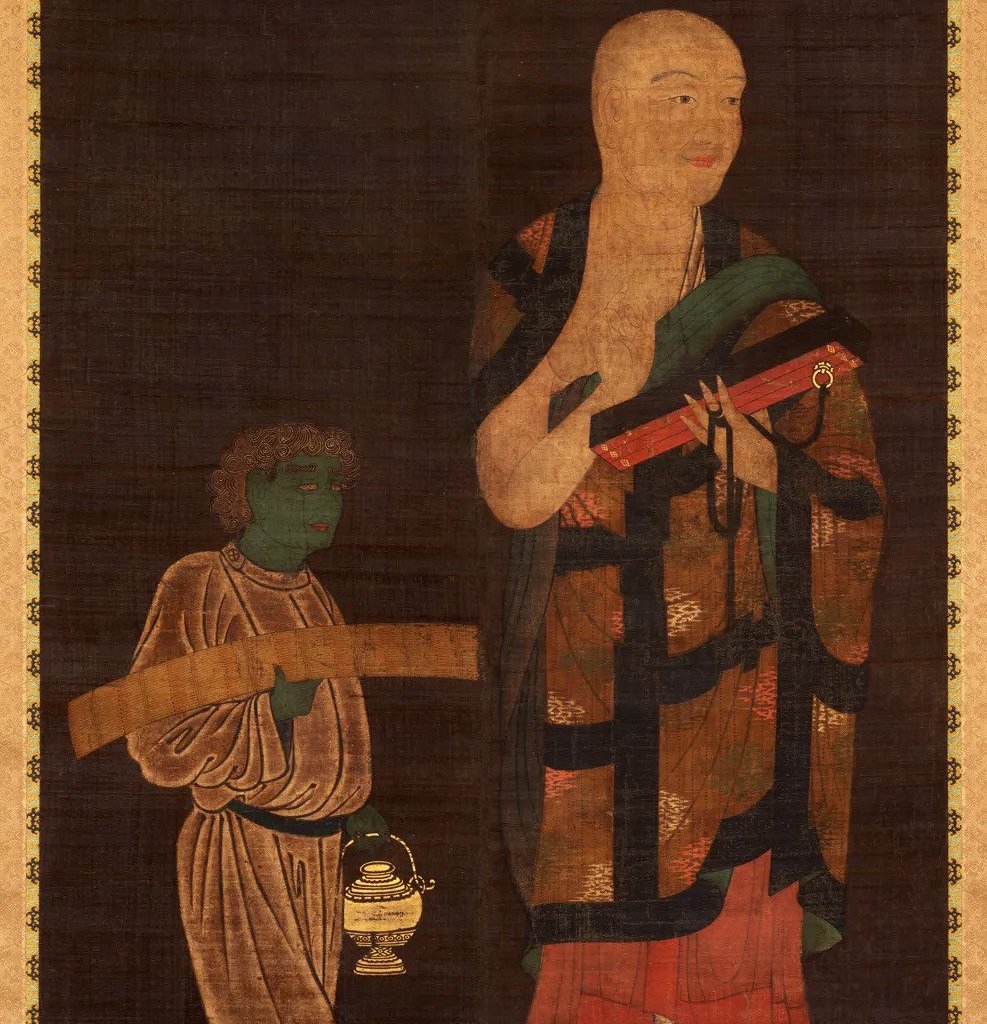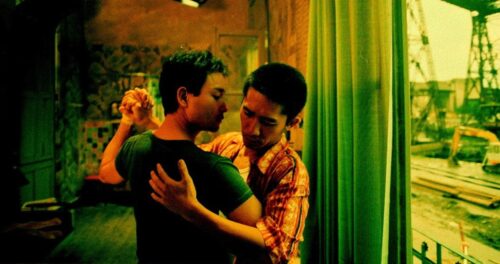This Week in China’s History: February 645
On the seventh day of the first lunar month — mid-February of 645 on the Western calendar — a traveler entered the city gates of the Tang capital, Chang’an (modern-day Xi’an). He had departed 16 years earlier in secrecy, quietly defying an imperial order not to go, but his return was quite the opposite: an elaborate reception so great that crowds thronging the city streets delayed his entry by a day. When he did arrive, the spectacle stood out even by the standards of the prosperous Tang. As translated by Li Rongxi 李榮熙, “All the monasteries send monks and nuns in their ceremonial robes for the occasion. The people vie with one another in preparing their best banners, tapestries, umbrellas, precious tables, and carriages…with the sound of pearls and jade hanging from their belts tinkling in the air, amidst folden flowers scattered on the road. Scholars and local officials line the ceremonial path.”
The spectacular welcome was a fitting conclusion for what is one of the most remarkable journeys undertaken in any era. Xuanzang, a Buddhist monk, covered some 10,000 miles on foot and horseback, from China to India, and passed through parts of what are today Kyrgyzstan, Uzbekistan, Tajikistan, Afghanistan, Pakistan, and Nepal.
Along with his memories and stories of more than a decade on the road, Xuanzang brought with him a treasury of art and literature, as well as holy relics. Chief among these were relics of the Buddha himself: more than 100 pellets of the Buddha’s flesh, as well as bones. Seven statues of the Buddha were included too, made of sandalwood, silver, and gold, up to four feet tall.
The centerpiece of his belongings, though, was nearly 700 books and manuscripts. Mostly Buddhist texts written in Sanskrit, they were the lure that had brought Xuanzang out of China to India, seeking the roots of the religious tradition that had been growing in China for many centuries, and to which Xuanzang had devoted himself since boyhood.
There are many accounts of Xuanzang’s life, but the most popularly accessible one is Sally Hovey Wriggins’s Xuanzang’s Silk Road Journey. Wriggins describes how Xuanzang was born in Henan late in the Sui dynasty and began a life as a monk in his brother’s monastery in Luoyang. Eventually, he found his way to the new capital, Chang’an, amid the tumult of a new dynasty.
In his studies, Xuanzang acquired both a knowledge of the Indian languages of early Buddhism and also a skepticism of many of the translations that had rendered these texts into Chinese. Not yet 30 years old, he resolved to find the writings at their source, in India, and embarked on a journey along the Silk Roads in defiance of imperial order not to leave the empire.
Xuanzang’s journey is remarkable, but it is also difficult to separate truth from embellishment from fantasy. On the verge of death in the Gobi Desert, a spirit (or his horse?) guides him to a hidden spring. A miraculous storm stays the hand of pirates about to murder him. A mysterious monk frees him from the clutches of robbers who have ambushed Xuanzang’s traveling party. But literary license aside, Xuanzang’s journey was astonishing. He traversed the deserts of central Asia and the peaks and valleys of the Himalayas. His mission was religious, but it was also cultural and diplomatic.
Xuanzang was not the first Chinese monk to reach India — historian Tansen Sen has a great introduction to three of the important early ones — but his experience was more extensive than any who had come before. He met with kings and princes in dozens of places, demonstrated his devotion in the most sacred sites of Buddhism, and worked with the most profound scholars of his day. Recording his experiences and observations in a book, 西游记 (xīyóujì — more about that title shortly), commonly translated as Record of the Western Regions, Xuanzang’s work is not only of value in religion, but also to students of diplomacy, geography, art history, archeology, and other disciplines.
One unique aspect of Xuanzang’s writing is that he goes to India as a Buddhist monk seeking the wisdom of the Buddhist heartland. In this context, China is often perceived as a backwater, and Xuanzang gives the reader insights into cross-cultural perspectives. Historian Tansen Sen has noted that Xuanzang’s account “not only offers the views on India and the Indian society of the Chinese pilgrim, it also provides rare glimpses into the Indian perception and knowledge of China, seldom available in contemporary Indian sources.” Xuanzang was himself responsible for establishing diplomatic relations between several Indian kingdoms and the Tang court, and became known, in a dozen years in the subcontinent, as “one of the greatest metaphysicians of medieval Buddhism,” according to Wriggins.
Xuanzang’s last stop in India was at the court of King Harsha, the ruler of much of northern India. At Harsha’s invitation, Xuanzang took part in a debate tournament, representing Mahayana Buddhism against advocates of other religions. The debate devolved into violence. According to Xuanzang’s account, this was because the other debaters were so enraged by the irrefutability of Xuanzang’s arguments, but whatever the case, the tournament ended with death threats and prison sentences. And Xuanzang decided it was time to return to China.
In the spring of 643, Xuanzang set out home with an escort provided by King Harsha. With a caravan of some 20 followers, horses, donkeys, and an elephant, Xuanzang crossed mountain passes more than 13,000 feet in altitude before descending and making his way toward the Silk Road cities of Kashgar, Khotan, and Loulan. His treasure was diminished by the loss of his elephant — it toppled down a gorge and drowned in the river below, chased by bandits — and many of his horses, without which he was unable to carry all the books and manuscripts he had acquired. Still, he approached the borders of the Tang empire eager to share what he had learned, but one obstacle remained: he had left China against imperial orders. Would he be welcome to return?
In Khotan, Xuanzang sent a letter ahead to the capital, explaining his travels to the emperor and asking permission to return. Half a year later, the emperor’s reply invited him back to Chang’an, where he was greeted with the spectacle reception described at the start of the column. In the cosmopolitan environment of the Tang capital, the outward-looking spirit of curiosity that Xuanzang represented was welcomed. Not only did Xuanzang meet several times with the emperor, but a small army of translators and scribes helped him translate what he had brought back and record what he had observed.
Xuanzang’s legacies are many. Perhaps the most familiar is his transformation into a fictional character in the novel that shares the Chinese title of Xuanzang’s own memoir, but usually rendered in English as Journey to the West. This Xiyouji, first published in the 16th century, has been called the most popular work of fiction in East Asia, and has given rise to dozens of adaptations, including both live-action and animated film and television. Xuanzang — renamed Tripitaka, or Sānzàng 三藏 — is the inspiration for Wu Cheng’en’s novel Journey to the West, but not the protagonist: that role goes to the Monkey King, who has become one of the most beloved and recognizable characters in fiction.
Anyone visiting Xi’an today will recognize one of Xuanzang’s other legacies: the Great Wild Goose Pagoda that rises more than 200 feet into the sky. The pagoda was originally built to house the scriptures Xuanzang brought back with him, and then nearly doubled in height 40 years later when the female Emperor Wǔ Zétiān 武则天 renovated it. A Ming dynasty earthquake collapsed the top five stories, however, leaving it at about its original height.
We often think about “globalization” as a modern phenomenon, and certainly the scale and speed of exchange and communication today are unlike anything that came before. Likewise, Central Asia is often thought of as a backwater, far from centers of education and commerce. The story of Xuanzang’s journey puts the lie to both: a reminder that for millennia, central Asia has been the center of rich cultural and commercial exchange, and movement among its great cultures has long been one of its defining features.
This Week in China’s History is a weekly column.






